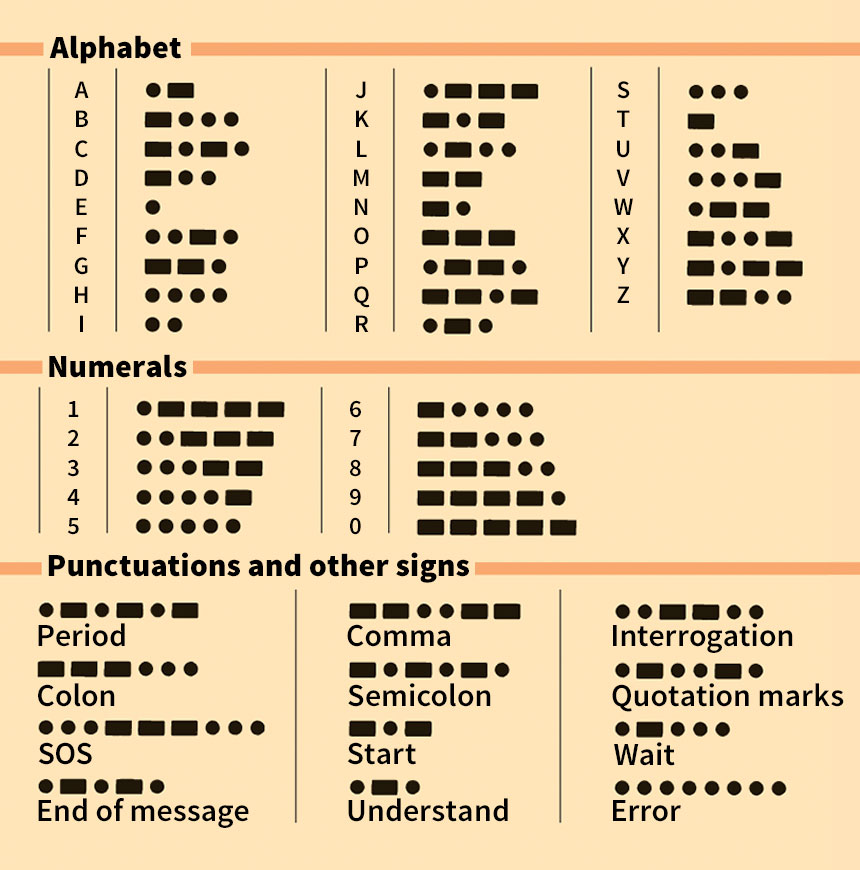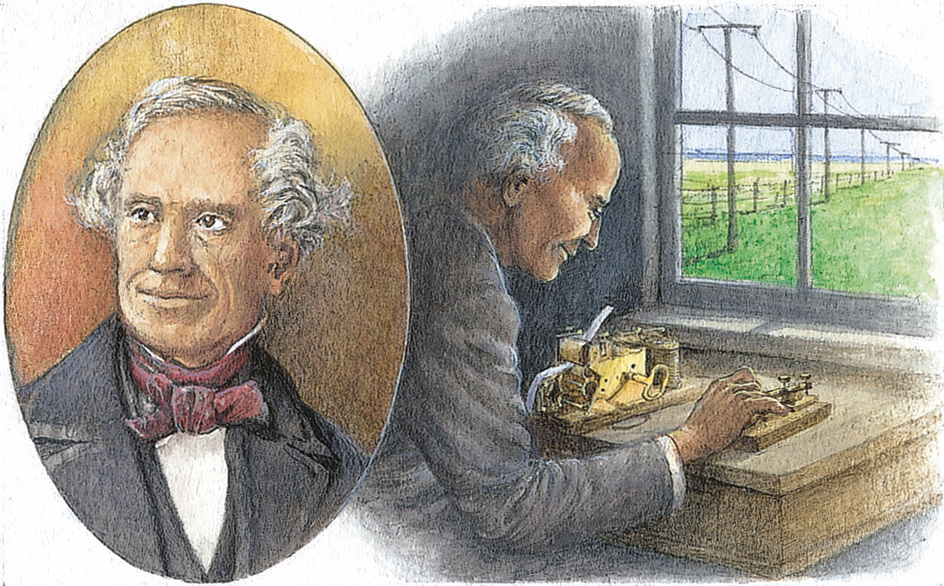Morse code is a system of sending messages that uses short and long sounds combined in various ways to represent letters, numerals, and other characters. A short sound is called a dit; a long sound, a dah. Written code uses dots and dashes to represent dits and dahs.

The code is named for the American inventor and painter Samuel F. B. Morse, who patented the telegraph in 1840. In the past, telegraph companies used American Morse Code to transmit telegrams by wire. An operator tapped out a message on a telegraph key, a switch that opened and closed an electric circuit. A receiving device at the other end of the circuit made clicking sounds and wrote dots and dashes on a paper tape. Today, the telegraph and American Morse Code are rarely used.

The International Morse Code was derived from the American Morse Code for use by radio telegraphers. Today, only amateur and maritime radio operators still use this code regularly. Military and commercial operators may also use it when radio signals are too weak for other systems to work. In this code, a dah is three times as long as a dit. Between the sounds that represent a character, there is an interval of silence as long as one dit. Between letters are three such intervals; between words, seven intervals.
